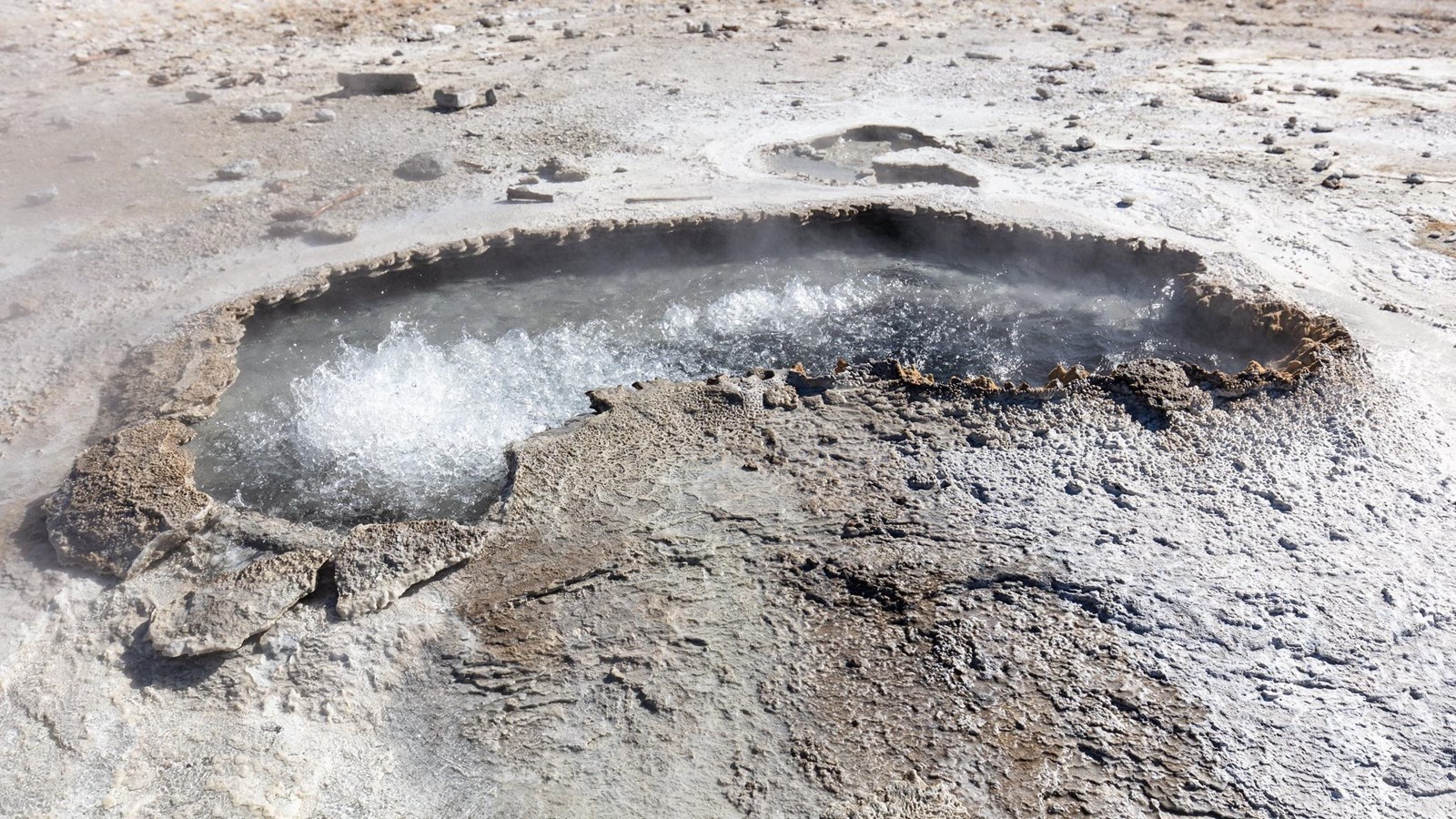Last updated: November 19, 2024
Place
Ear Spring

NPS / Jacob W. Frank
Ear Spring is a truly hot spring, with surface water temperatures often above the boiling point of 198°F (92°C) at this elevation. True to its name, this pool is shaped somewhat like an ear.
Very rarely, Ear Spring erupts. The last eruption happened on September 15, 2018 (14 years since the last known eruption). This eruption proved to be historic, for it actually ejected old coins, cans, a cement block, and even a baby pacifier along with the usual water and steam. This is a good reminder to never toss anything into thermal features, as they can damage the features, sometimes to the point of plugging the vents completely. Thankfully, it appears that the major of objects ejected from Ear Spring were historic rather than contemporary objects.
Ear Spring has an average temperate of 197.1°F (91.7°C), an average pH of 8.4, and an average conductivity of 1889 uS/cm.
Hot Springs
Hot springs are the most common hydrothermal features in Yellowstone. Their plumbing has no constrictions.
Superheated water cools as it reaches the surface, sinks, and is replaced by hotter water from below.
This circulation prevents water from reaching the temperature needed to set off an eruption.
Color & Heat Lovers
Hydrothermal features are also habitats in which microscopic organisms survive and thrive. They are called thermophiles: "thermo" for heat and "phile" for lover.
Although they are too small to be seen with the naked eye, trillions are grouped together and appear as masses of color. They are nourished by energy and chemical building blocks.
Colorless and yellow thermophiles grow in the hottest water.
Orange, brown, and green thermophiles grow in cooler waters.
Imagine living in near-boiling temperatures, in hydrothermal features with the alkalinity of baking soda, or in water so acidic that it can burn holes in clothing. Microorganisms in Yellowstone need these extremes to survive.
Upper Geyser Basin
The majority of world’s active geysers are in the Upper Geyser Basin, including Old Faithful. Only four other places in the world have large concentrations of hydrothermal features: Russia (Kamchatka), Chile, New Zealand, and Iceland.
The heat for the hydrothermal features comes from Yellowstone’s volcano. Molten rock or magma may be as close as 3-8 miles (5-13 km) underground. Rain and snow supply water that seeps down several thousand feet (more than a kilometer) below the surface where it is heated.
Underground cracks form a natural plumbing system. Hot water rises through the plumbing to produce hot springs and geysers.
Use Caution in Hydrothermal Areas
- Stay on boardwalks and designated trails.
- Hydrothermal water can severely burn you.
- Never run, push, or shove.
- Supervise children at all times.
- Do not scratch hydrothermal mats.
You are responsible for your safety.
Think safety, act safely. Yellowstone is a dangerous place.
